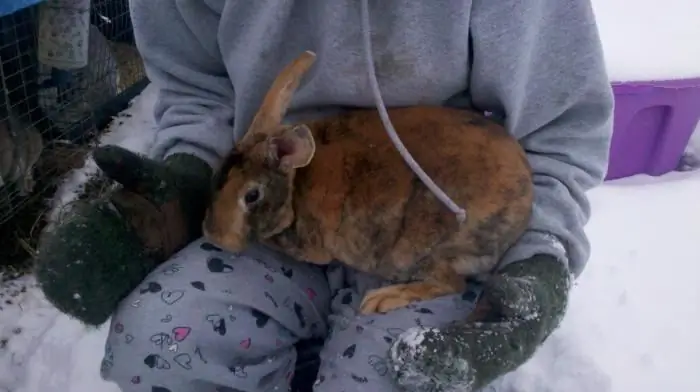2025 Author: Howard Calhoun | [email protected]. Last modified: 2025-01-24 13:10:39
The development cycle of the aerial parts of raspberries is 2 years. Pruning raspberries after fruiting stimulates the growth of new stems to replace old ones, and prevents the reproduction of pests and diseases. According to the technology of carrying out, it differs slightly for summer and autumn varieties. The best time for this procedure is the end of summer or September-October.

Summer varieties
Summer varieties are very popular and very productive. Berries grow on lateral shoots of biennial stems. The number of side branches depends on the growth of the stem: there are a lot of them on a long stem, few on a short one.
When planting, the stem is cut to 25 cm from the ground. In the first year, the shrub does not bear fruit, so the flowers on the stumps must be removed. New stems will appear from the ground, which are thinned out, leaving the strongest. Proper pruning of raspberries during this period is pruning stumps to a level of 25 cm from the ground.
A year after planting a shrub, a row of strong stems grows,which are tied to a wire support. Its top row should be at a distance of 1.5 m from the soil. The plant is starting to bear fruit. Raspberry pruning after fruiting summer varieties is done to the soil level, since the stem "lives" only 2 years. Young stems are thinned out, leaving an interval of 10 cm, and tied to a wire.

Autumn varieties
The fruits of autumn varieties grow on lateral branches, which are located at the top of the stem. When planting, the plant is pruned in the same way as raspberries of summer varieties. In early spring, all stems are completely removed - this stimulates the rapid growth of young shoots that will bear fruit in September. Pruning raspberries after fruiting consists in removing the aerial part of the shrub completely.
There is nothing to worry about - young stems will appear in the spring. There will be weak ones among them, so raspberries need to be thinned out and only powerful shoots should be left: this way they will gain strength faster. If necessary, plants are tied to a wire. Since the growth, branching, fruiting of autumn varieties occurs in one year, raspberry pruning after fruiting is done to the ground annually.
The one-year development cycle of remontant raspberries (autumn varieties) has advantages:
- pests and diseases do not have time to multiply;
- stems do not freeze out, as they are not available in winter.
There is also a drawback: a short summer is not always enough to realize the fruiting potential. Therefore, with the onset of cold weather, flowers and berries can still be on the branches.

Stems of remontant varieties can be left for the second year for fruiting - they do not dry out, unlike biennials. In this case, young shoots will give the first crop, and last year's shoots - the second. There will not be many berries, but there will be a lengthening of the period of fresh fruits.
So, we have looked at how and when to prune the bush. Pruning raspberries for the winter is the removal of two-year-old shoots of summer varieties and annual stems of autumn varieties to the soil level. It must be remembered that all cut branches are carried away from the site and burned, otherwise they can become a source of pest spread. Take care of your plants and they will provide you with a high yield!
Recommended:
What is winter? Sowing, germination and care of winter crops

One of the main agricultural products is grain. Crops of cereals, which are introduced into the soil at the end of summer or autumn, are called winter. Winter varieties have a higher yield than spring varieties
What to feed a rabbit in winter? Breeding rabbits in winter. Keeping and feeding rabbits in winter

We all know this catchphrase "Rabbits are not only valuable fur …", but even to get this fur, not to mention 3-4 kilograms of easily digestible dietary meat, you need to make a lot of effort
PJSC "Taganrog Aviation Scientific and Technical Complex named after G. M. Beriev" (TANTK named after Beriev): description and reviews

TANTK im. Berieva is one of the oldest design bureaus in Russia with unique experience in the design and production of amphibious aircraft. Over the history of the company's activities, aircraft have been created that have become legendary. Today, the design bureau continues to work, producing products in demand for domestic and foreign markets
Preparing the onion for planting on the head. Preparing onion sets before planting. Preparing the soil for planting onions in spring

Each of the housewives knows that there should always be onions in the house. This product is added to almost any dish, it can bring great benefits to our body
Wintering bees on the street in different regions of Russia. Preparing bees for winter outdoors

The article is devoted to the preparation and organization of bees for wintering on the street. The necessary measures to ensure favorable microclimate conditions for the safe wintering of bee colonies in different regions are considered

